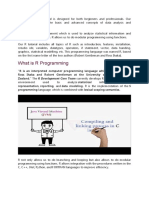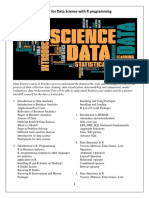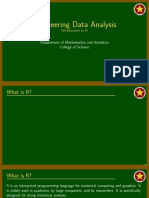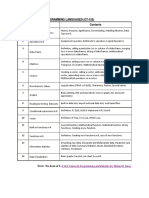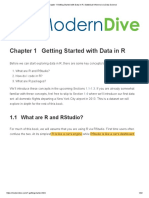0% found this document useful (0 votes)
11 views2 pagesStatistics Lecture Note 'Cont
To learn data science, it's essential to be proficient in a programming language, with Python recommended for beginners and R for a statistics-focused approach. Key learning areas include basic syntax, data structures, and libraries specific to each language. The document also outlines fundamental concepts in R programming, such as expressions, variables, data types, comments, functions, case sensitivity, and naming rules.
Uploaded by
daloziee21Copyright
© © All Rights Reserved
We take content rights seriously. If you suspect this is your content, claim it here.
Available Formats
Download as DOCX, PDF, TXT or read online on Scribd
0% found this document useful (0 votes)
11 views2 pagesStatistics Lecture Note 'Cont
To learn data science, it's essential to be proficient in a programming language, with Python recommended for beginners and R for a statistics-focused approach. Key learning areas include basic syntax, data structures, and libraries specific to each language. The document also outlines fundamental concepts in R programming, such as expressions, variables, data types, comments, functions, case sensitivity, and naming rules.
Uploaded by
daloziee21Copyright
© © All Rights Reserved
We take content rights seriously. If you suspect this is your content, claim it here.
Available Formats
Download as DOCX, PDF, TXT or read online on Scribd
/ 2














